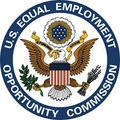 By Mark Wiletsky
By Mark Wiletsky
The Americans With Disabilities Act (ADA) “does not endow all disabled persons with a job—or job schedule—of their choosing,” according to the majority of judges on the full Sixth Circuit Court of Appeals. In an 8 to 5 decision, the Sixth Circuit Court ruled en banc that Ford Motor Company did not violate the ADA when it denied an employee’s request to telecommute up to four days per week in order to accommodate her irritable bowel syndrome. EEOC v. Ford Motor Co., No. 12-2484 (6th Cir. Apr. 10, 2015).
“Good, Old-Fashioned Interpersonal Skills” Made In-Person Attendance Essential
The Equal Employment Opportunity Commission (EEOC) argued that a resale buyer for Ford, Jane Harris, who had irritable bowel syndrome that made it difficult for her to be far from a restroom, should be allowed to work from home up to four days per week. The agency cited Ford’s telecommuting policy that allowed other workers, including some resale buyers, to telecommute as evidence that Harris’ telecommuting request was a reasonable accommodation under the ADA.
The Court disagreed. It ruled that regular and predictable on-site attendance was an essential function of the resale-buyer position at Ford. Resale buyers needed to purchase raw steel from steel suppliers and then resell it to parts manufacturers to make parts used in Ford vehicles. Although some interactions could be done by email and telephone, the Court found that many required “good, old-fashioned interpersonal skills,” and resale buyers needed to be able to meet face to face with suppliers, parts manufacturers and Ford employees during core business hours.
Importantly, the Court reiterated the general rule is that regular attendance at work is essential to most jobs, especially interactive ones. It pointed to past court opinions as well as to EEOC regulations that support the premise that regular and predictable on-site attendance is an essential job function. The Court even relied on that “sometimes-forgotten guide” – common sense, stating that non-lawyers (as well as judges in other appellate circuits) recognize that regular in-person attendance is an essential function, and a prerequisite to other essential functions, of most jobs.
Other Buyers Telecommuted on a Predictable, Limited Basis
But what about the fact that Ford had a telecommuting policy that allowed other employees, including resale buyers like Harris, to work from home? Wouldn’t that make telecommuting a reasonable accommodation for Harris?
The Court said no, because she proposed to telecommute four days per week on a schedule of her choosing. The other resale buyers who telecommuted did so only one established day per week and they agreed in advance that they would come into work that day, if needed. They were also able to perform well and maintain productivity. Harris, on the other hand, wanted to be able to pick and choose which days she would telecommute, up to four days per week, without agreeing to come in those days, if necessary. The Court found that none of these other employees’ more predictable and more limited telecommuting schedules removed regular on-site attendance from the resale buyer’s job.
As a result, the Court ruled that Harris’ proposed telecommuting accommodation unreasonable.
In addition, Ford had allowed Harris to telecommute on an as-needed basis on three separate occasions and her performance suffered. Other attempts to improve Harris’ attendance also failed. The Court found that Harris could not perform the essential functions of her job and was unable to establish regular and consistent work hours. Therefore, it ruled that she was not a “qualified individual” under the ADA.
Technology Did Not Carry the Day
The EEOC argued that advances in technology make on-site attendance less essential. The Court disagreed in this case, stating that there was no evidence presented that specific technology made personal interactions unnecessary for resale buyers.
No Blind Deference to Employer’s Judgment
The Court made a point of stating that its opinion did not open the door for courts to blindly accept as essential whatever an employer says is essential for a particular job. It emphasized that an employer’s words, policies and practices were all important in deciding whether a particular task or requirement is an essential job function.
In Ford’s case, the evidence supported Ford’s judgment that regular and predictable in-person attendance was essential for resale buyers. The Court affirmed the district court’s grant of summary judgment in favor of Ford.
No Retaliation For Termination
The Court also ruled that Ford did not retaliate against Harris when it fired her for poor performance just four months after she had filed a charge of discrimination with the EEOC. Key was Ford’s good documentation of Harris’ performance and interpersonal issues. She had been ranked in the bottom 10% of her peer group before she filed her charge. Documentation showed that she failed to update spreadsheets, complete her paperwork, schedule training sessions, price items correctly and finish her work on time. Despite the closeness in time of the firing to her charge filing, the Court ruled that the EEOC failed to present evidence from which a reasonable jury could find that the real reason that Ford terminated Harris was unlawful retaliation instead of poor performance.
Dissent: Either Physical Presence is Not Essential or Telecommuting is A Reasonable Accommodation
Five judges on the Sixth Circuit dissented, believing that the EEOC had presented enough evidence to send the EEOC’s claims to a jury. Specifically, the dissent stated that the evidence was sufficient to show that there remained genuine disputes over whether Harris was a qualified individual, either because in-person attendance was not an essential function of her job, or because telecommuting would be a reasonable accommodation for her. It pointed to Ford’s telecommuting policy which allowed for “one to four days” of telework each week. It noted that Harris proposed that she be able to work from home up to four days each week, as was arguably allowed under the policy, not that she be permitted to telecommute four days each and every week.
The dissent also asserted that Harris’ past attendance issues that were a result of her disability should not be used against her in deciding whether a telecommuting arrangement during core business hours would be a reasonable accommodation under the ADA. Moreover, the dissent found that Ford should have engaged in a more interactive process to clarify Harris’ telecommuting accommodation request. Finally, the dissent believed that there was a genuine dispute over whether Ford retaliated against Harris for filing her discrimination charge.
Lessons for Employers Facing ADA Telecommuting Accommodation Requests
The majority’s decision finding that regular and predictable in-person attendance is an essential function of most jobs, especially interactive ones, is favorable for employers. But it does not mean that telecommuting can never be a reasonable accommodation. In fact, the dissent in this case demonstrates that telecommuting requests for disabled employees is likely to continue to be an issue with which employers will grapple in coming years.
If face-to-face interactions and in-person attendance at meetings or other work-related functions is essential for certain jobs at your workplace, be certain to include those tasks in your job descriptions. If you generally allow telecommuting, be sure to have a written policy and apply it consistently. If presented with a request to telecommute in order to accommodate a disability, engage in an interactive process to discuss whether telecommuting would be appropriate for that particular position and employee, whether it would constitute an undue hardship for your organization and if alternative accommodations would allow the employee to perform his or her essential functions. And by all means, make sure you have concrete documentation of an employee’s poor performance or policy infractions before taking adverse action against anyone who has filed a discrimination charge.
Click here to print/email/pdf this article.
 A Chief Nursing Officer (CNO) is alleged to have stated that a younger nurse could “dance around the older nurses.” Not hard to imagine that such a statement would raise the hackles of many nurses over age 40, but do comments like that mean that the hospital discriminated against one or more nurses on the basis of their age when the nurses were discharged or resigned? That is the question facing Montrose Memorial Hospital after the Equal Employment Opportunity Commission (EEOC) filed an age discrimination lawsuit against the Western Slope hospital last Friday.
A Chief Nursing Officer (CNO) is alleged to have stated that a younger nurse could “dance around the older nurses.” Not hard to imagine that such a statement would raise the hackles of many nurses over age 40, but do comments like that mean that the hospital discriminated against one or more nurses on the basis of their age when the nurses were discharged or resigned? That is the question facing Montrose Memorial Hospital after the Equal Employment Opportunity Commission (EEOC) filed an age discrimination lawsuit against the Western Slope hospital last Friday.
 By
By 





